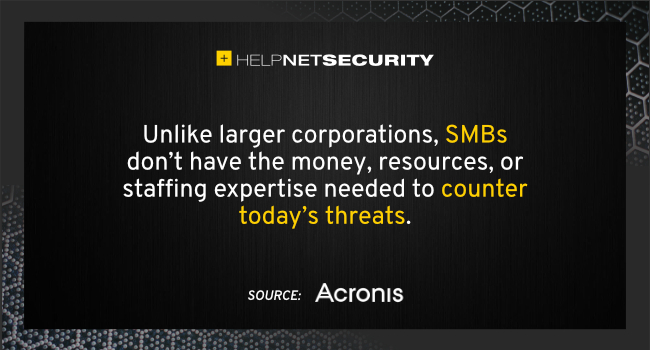SMBs increasingly vulnerable to ransomware, despite the perception they are too small to target
Acronis released a report which gives an in-depth review of the cyberthreat trends the company’s experts are tracking. The report warns that small and medium-sized businesses (SMBs) are at particular risk based on the attack trends seen during the first six months of the year.

Ransomware greatly impacting SMBs
The report revealed that during the first half of 2021, 4 out of 5 organizations experienced a cybersecurity breach originating from a vulnerability in their third-party vendor ecosystem. That’s at a time when the average cost of a data breach rose to around $3.56 million, with the average ransomware payment jumping 33% to more than $100,000.
While that represents a major financial hit to any organization, those amounts would sound the death-knell for most SMBs, which is a major concern for the second half of 2021.
“While the increase in attacks affects organizations of all sizes, something that’s under-reported in the coverage of current cyberthreat trends is the impact on the small business community,” explained Candid Wüest, Acronis VP of Cyber Protection Research.
“Unlike larger corporations, small and medium-sized companies don’t have the money, resources, or staffing expertise needed to counter today’s threats. That’s why they turn to IT service providers – but if those service providers are compromised, those SMBs are at the mercy of the attackers.”
By utilizing supply-chain attacks against managed service providers (MSPs), attackers gain access to both the MSP business and all of its clients. As seen in the SolarWinds breach last year and the Kaseya VSA attack earlier in 2021, one successful attack means they can breach hundreds or thousands of SMBs downstream.
Other common attacks
Beyond the high-profile attacks that have dominated the headlines during the past six months and the concerns raised about the impact on MSPs and small businesses, the report also noted:
- Phishing attacks are rampant. Using social engineering techniques to trick unwary users into clicking malicious attachments or links, phishing emails rose 62% from Q1 to Q2. That spike is of particular concern since 94% of malware is delivered by email. During the same…


